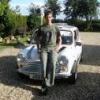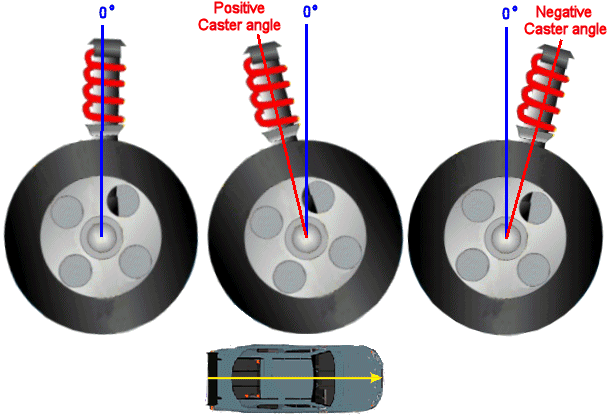Caster Angle – viewed from the side of the car, the top ball-joint should be positioned behind the bottom one. The angle made by a line drawn through the ball-joint centres and vertical describes caster angle. Its effect is a self-centring action that causes the car to run straight where no steering input is made and pulls the wheels back to straight ahead when exiting corners. Controlled by tie-rod length, shortening it will increase the self-centring effect, lengthening it the opposite. Increasing it also helps reduce the positive camber induced by body roll. On the downside, increasing caster decreases camber and induces body-roll by virtue of lowering the inner wheel and raising the outer wheel when cornering. Having said that, a big caster angle can cause the inner edge of the inside tyre to re-engage the ground where the wheel goes 'light' in a tight corner, helping to restore some grip. A further effect of increasing caster is a very slight lengthening of the actual wheelbase, increasing in effect as the wheels are turned on the outer side in a corner. Perhaps very slightly increasing stability.
Sorce KC
As listed here in the forum by Cooperman and others the castor for a road car should be 3-3,5Degs max
And something else due to manufacturing tolerences of standard conponents if you have adjustable tie rods and set the castor angle side for side, you could have a different wheel base side for side.

And remember if you increase the negative camber then you increase the castor
Edited by KernowCooper, 21 June 2013 - 11:18 PM.
![]()

















